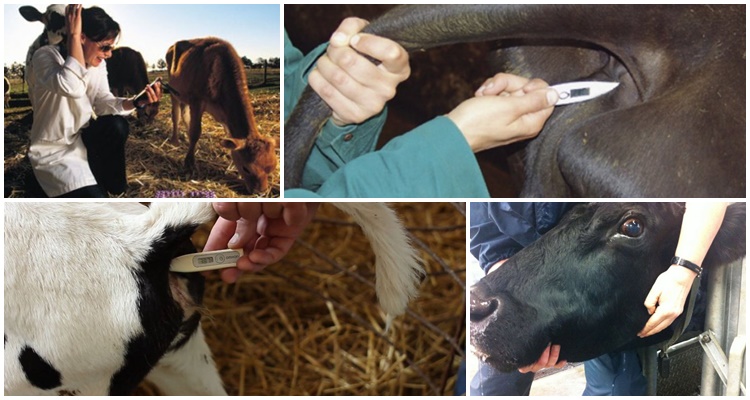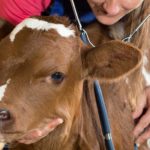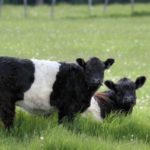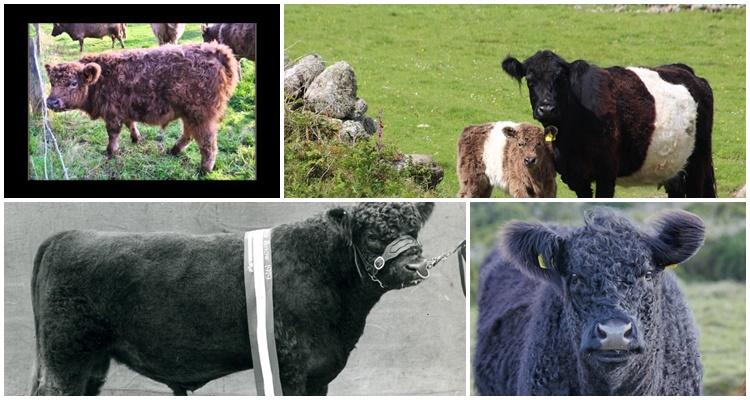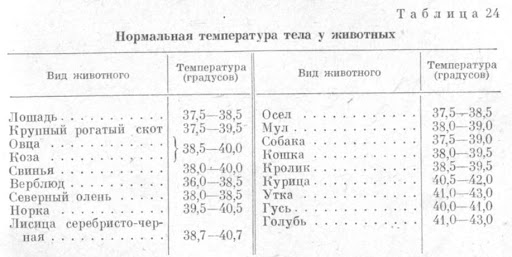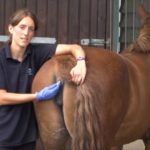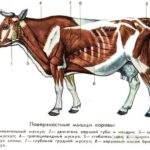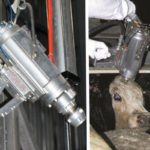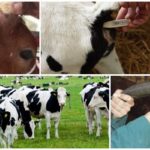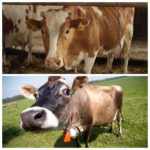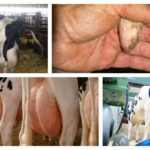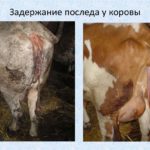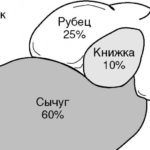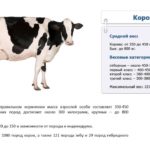Data on the temperature, pulse rate and respiration of cattle can tell an attentive owner a lot about the health of the livestock. Monitoring of these parameters is necessary if the habitual behavior of cows changes or sick individuals are discovered in the herd. Animal owners need to know what the normal indicators should be and how they change depending on gender and age.
Behavior and mental activity are normal
The health of a cow can be judged by its appearance and behavior.Normally, animals are calm, have a good appetite, and are happy to go out for walks. If the animal is overly excited, moans pitifully, fights in the stall, or is too apathetic, lies down, refuses to eat or drink, it is necessary to call a veterinarian.
The condition of animals is assessed according to several criteria:
- Appearance. The cow should have clear eyes and a dry and cool nose. An even gait and a straight back indicate the absence of problems with the hooves, joints and scar. Clean, shiny wool means proper maintenance and nutrition.
- Gum. Loss of gum is an alarming symptom. Normally, cows chew 7-10 hours a day; less time indicates an animal illness or poor nutrition.
- By examining the cow from behind, the condition of the udder and rumen is determined. A healthy dairy cow has a symmetrical udder and a slightly protruding rumen on the left side.
- Udder. It should be elastic, without scratches, papillomas, seals, or swelling. Be sure to inspect the nipples before milking. The softness of the nipples and the absence of redness indicate the health of the animal.
- The behavior of the cow depends on the condition of the hooves and joints. If she stands straight and calmly while eating, it means her legs are not painful.
In addition, an attentive owner should monitor the temperature, pulse and breathing rate of the cattle.
What should a cow's pulse be?
The pulse varies depending on the sex and age of the animal. In newborn calves (up to 14 days), the heart rate is high - 100-140 beats per minute. As they grow older, it decreases; for babies from 3 months to a year, the pulse is normal - 70-100 beats per minute. For a cow, the norm is 50-80 beats; for a bull, the heart beats less often - 50-60 beats per minute.The pulse rate is influenced by external factors; if the animal is scared or overheated, the heart rate increases.
A high pulse rate for no apparent reason indicates that the animal is sick. These could be infectious diseases, heart problems; you should contact your veterinarian.
Breathing is normal
The respiratory rate decreases as the animal ages. Small calves breathe more often than adult animals. Pregnant cows breathe more frequently than dairy cows. It may become more frequent due to stress or overheating. It happens that rapid breathing is a sign of animal illness. It can accompany various types of pneumonia and infectious diseases, especially if there is an increase in temperature. Increased breathing is observed when livestock overheats in hot weather; this is a natural way of thermoregulation. Breathing quickens if the cow walked or ran quickly, under the influence of fear, when the animal feels pain.
Normally, the respiratory rate of a cow is 15-30 breaths per minute, for bulls - 15-25 breaths, for calves up to 14 days - 30-50 breaths per minute, for calves 3-12 months - 25-45 breaths.
Experienced farmers note that if the animal is healthy, the cow’s productivity can be judged by its respiratory rate. The highest milk yield is typical for cows with a high metabolic rate; the respiratory rate in this case will also be high, about 30 respiratory movements per minute. When an animal is ill, a chart is drawn up that shows the cow’s temperature, pulse, respiratory rate and behavioral characteristics daily.This allows us to judge the dynamics of treatment.
What is normal temperature
An increase in temperature is one of the most important signs of animal disease. What is the normal temperature for cows? - This is a question that novice farmers often ask. The indicator depends on the age of the animal: for an adult cow, the norm will be 37.5-39.0 °C. For calves up to 2 weeks - 38.5-40.0 °C, for calves from 3 months to 1 year - 38.5-39.5 °C. An increase in temperature is observed:
- in case of poisoning in pasture;
- development of infectious diseases;
- inflammatory processes in the animal’s body (mastitis, inflammation of the joints);
- maintenance and nutrition errors;
- complications after calving.
An increase in readings to +41 °C signals an acute form of the disease. A decrease in temperature (at the same time the cow's ears become colder) is observed during birth paresis. In each of these cases, the help of a veterinarian is required.
The sick animal is isolated from the rest of the livestock, and the TPD (temperature, pulse, respiration) must be recorded. If several animals from the herd have the same symptoms, be sure to notify the district veterinary service.
How to measure an animal's performance
To measure the pulse of a cow or calf, you need to place your palm on the subscapular area and count the number of heartbeats. The second way: measure the heart rate using the jugular vein in the animal's neck. The respiratory rate is determined by counting the number of breaths a cow takes per minute.
The temperature of animals is measured using the rectal method. The animal is firmly tied. A mercury or electronic thermometer is taken, treated with alcohol, and then with Vaseline, and inserted into the animal’s anus to a depth of 2-3 centimeters. Temperature measurement time: mercury thermometer - 6 minutes, electronic - 1 minute.After removal, the thermometer is washed with soap and water and wiped with an alcohol solution.
Reasons for deviations from the norms
Changes in heart rate and breathing rate can be caused by various factors:
- fast running;
- stress;
- overheating
These indicators change for pregnant cows. If a rapid pulse and shortness of breath are accompanied by an increase in temperature, you should definitely call a veterinarian; these may be the first symptoms of dangerous infectious diseases: pneumonia, foot-and-mouth disease, brucellosis.
In cases where fever and rapid breathing appear after calving, endometritis and other gynecological complications are possible. The temperature may rise when consuming low-quality (rotten or frozen) feed, in which case the cows experience rumen inflammation, accompanied by diarrhea.
Systematic monitoring of the pulse, respiration and temperature of animals allows you to notice changes in their condition in time and prevent the development of acute forms of diseases. Careful care and attention to animals will certainly result in high productivity.

